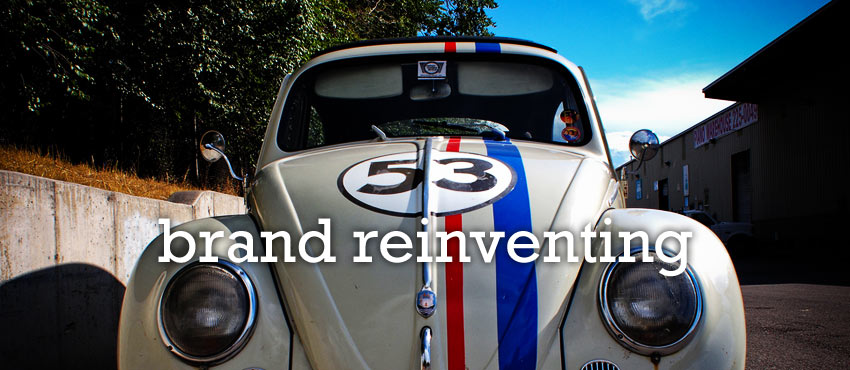Brands can thrive for years if associated products are reliable, the logo is instantly recognizable and the slogans are infectious. However, in a competitive marketplace where customers yield to mercurial tastes and shifting loyalties, a brand that once enjoyed devotion can be vanquished… like Brim coffee, Breck shampoo and Yugo cars. However, no brand has to die without a fight. Much like cats, brands can enjoy one, two or nine lives, depending on whether expert resuscitation is applied in time and with the right savvy.

Below are ways to recognize a dying brand and five revival strategies to bring it back to life.
Signs of a Dying Brand
In marketing, a dead brand or a brand on the verge or death is known as a ghost brand. When a brand goes ghost, it’s easy to identify because it has the following attributes:
- Stagnancy: Great brands evolve and adapt to the market. Dying brands stay the same and become obsolete.
- Shrinking customer base: Customers turn to larger, cheaper or newer competitors who can meet their desires better. New generations shun the products and the age of the brand’s audience gets older and older.
- Disappearing profit: The brand operates in the red and is no longer self-sustaining.
- Old & boring identity: The new kids on the block (competitors) are more innovative and exciting, using techniques and resources that are fresh and bold.
Brand Revival
Death of a brand doesn’t have to be permanent. The Volkswagen Beetle came back. So did Noxzema. Brands can be revived, whether by original owners, descendents of founders or entrepreneurs who want to buy the brand as an intellectual property in hopes of capitalizing on what’s left of the brand recognition.
Here’s how to breathe new life into an old identity:
Leverage the memories
If a brand has been successful at any point in time, play on the nostalgia. Keep the logo, keep the tagline, re-record the catchy jingle, but update the relevance. Many emotional buyers will be willing to give revived products a try based on sentimentality alone. Make use of pop culture memories through:
- Ad blasts: Simulate a retro feel in ads and draw modern day connections.
- Viral videos: Appeal to younger generations who may not have strong memories of the product, but have heard references from parents or older siblings. Make an amusing, silly YouTube video laden with those references to inspire youngsters to share and pass it on.
- Product placements: Advertise through hotly anticipated movies or TV shows. Arrange to place products or jingles in scenes to cleverly announce the return of a defunct product while reinforcing currency and coolness.
- Commemorative Sales: Offer vintage and limited quantities of a product before rolling out new and improved varieties in order to drum up interest and milk the memories.
- Pay for Tweets: Find a celebrity with a strong following that can offer endorsements in the form of paid tweets that recall special features of the brand or that associate special life moments with the brand. This is an inexpensive, but effective way to commandeer a celebrity’s voice and fan base for the benefit of the brand. Reality stars, which can be had for really cheap, will do.
Reinforce Positive Associations
Before rolling out the revived brand, do market studies to see what traits people most remember about the ghost brand and which traits have made the best impressions. Keep those traits and strive to give customers that pleasant experience they remember from the past; remove the negative associations by changing the product in order to get rid of what customers hated and offer something new and enticing. Expand the associated product line to give customers more options.
Make the product innovative and contemporary
Many products fail because they don’t make use of new technology, new trends, new directions. Change what’s dated about the product and make it modern while still familiar. Pitch the product as the same, but better.
Partner with more successful brands
Don’t attempt to resuscitate your brand in a vacuum. Initially, it may not be strong enough. If you are reviving a brand of thermoses, hook up with brands that sell exercise equipment or lunch boxes in order to have a direct line to people who might be interested in thermoses. If you are bringing back a special shoe brand, strike a deal with Shoedazzle, which has growing popularity with the younger generation. If you are reviving a line of children’s water toys, see if you can make a deal with Disney World to sell them in Disney shops near water rides. You can agree to bundling deals, giveaways or cross promotions. As long as you can convince the bigger brand that you can fulfill a need or desire of their loyal customers, deals can be made.
Cater to the Cult
Many brands die after failing to properly identify their niche market. The benefit of the death is that it reveals who the target audience should have been and where the potential niche market lies. Nearly every dead brand has a fringe group who laments its demise, who creates social media pages in mourning, who amasses brand collectibles, who clamors for its return. Upon revival, identify and cater specifically to that cult following, whether it’s hipsters, gothic people, raw foodies, nerds, surfer dudes, whoever. Zero in on the lifestyle of the cult in advertising and special events in order to redefine your market. These zealots can be persuaded to create a frenzy around the re-launch; make them ambassadors who will host product parties or pass out coupons and freebies as part of a street team. The word-of-mouth in their offline and online communities alone will buoy sales and begin rebuilding audience interest and loyalty. Find these people by looking for fan clubs of the dead brands or seeing who’s selling vintage brand products through online auctions.
About the Author: Willie Pena is a freelance writer, video producer, visual artist, and music producer. He prefers the Oxford comma. In addition to writing for firms such as IBM, Colgate, Transunion, Webroot and a multitude of private clients and websites, he also shoots, directs, and edits the hit celebrity web series “Teens Wanna Know”. Catch his rare blog posts on williepena.com, and connect with him on Google+ and LinkedIn.
Photo credit: Clancycoop

